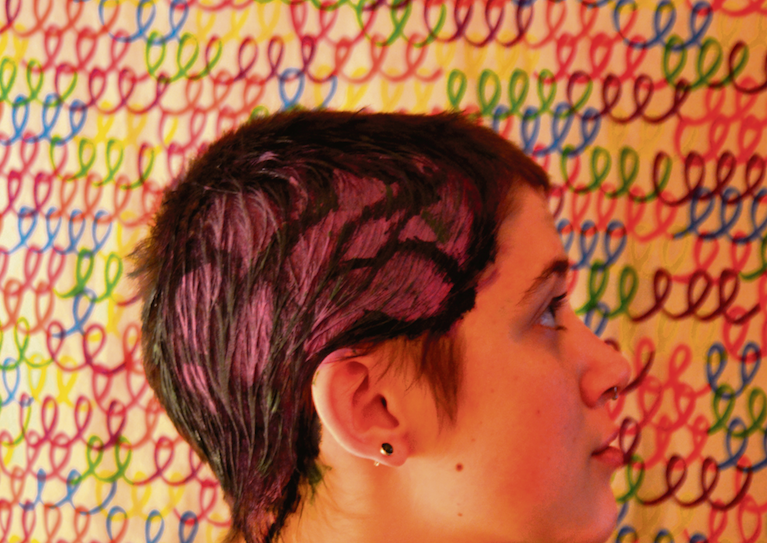As part of Mental Health Awareness Week at McGill, SSMU hosted an art therapy workshop entitled “Mental Health Awareness 101” on Thursday January 17. The two-hour workshop, which aimed to foster conversation around mental health on campus, began with an introduction from Denise Agiman, a theater professor at McGill, who introduced participants to Creative Art Therapy (CAT), a practice which allows for therapeutic self expression through visual arts, theater, music, and dance.
What is Creative Art Therapy (CAT)?
Participants took part in various arts-based exercises and drama therapy, during which Agiman explained that, based on Jungian theories, the goal of CAT was to enable freedom of expression through the arts, for traditional psychological therapy may be daunting for people struggling to put words to feelings. CAT thus ostensibly uses the arts as a mediator between patients and therapists. Agiman described a “distance effect,” where participants believe what they do is detached from them, but they are in fact projecting parts of themselves.
Agiman explained how, despite holding a PhD in theater, they enrolled in Concordia’s graduate drama therapy program in 2009 and graduated in 2013 with the will “to do something useful through theater.” Agiman now works at the Institut de Formation à l’Aide Communautaire à l’Enfant et à la Famille (IFACEF), the Community Assistance Institute for Children and Families, and at the Centre d’Art Thérapie Tealtro as an art therapist, drama therapist, and psychodrama therapist.
A typical CAT session
While some therapists are specialized in one branch of CAT, Agiman explained that they favour a more holistic approach, adapting prescribed exercises to each individual patient’s case. A typical CAT session lasts for about an hour, though the length varies according to the number of participants, and is typically divided into three parts.
Firstly, participants warm up for about 15 minutes, allowing them to “get rid of the outside world,” as Agiman puts it, in order to focus on the present moment. The second part, the main activity, lasts thirty minutes. This is the time during which issues are brought up through the chosen artistic practice.
The third and final part, called the closing, encourages patients to name emotions that came up in order to encourage awareness of what happened during the exercise. According to Agiman, the closing is the most important part of a session, as it enables people to cool down after an emotionally intense experience.
During the warm-up, the five participating students were encouraged to state their name, and an animal that corresponded best to their personality, and then justify their choice. Responses included cats, a giraffe, a dog, and a bird, and Agiman explained how each animal has distinct characteristics, which allows therapists to better understand their patients, supplemented with an insightful justification.
The “Six Part Story”
Warm-ups were followed by the “Six Parts Story,” an exercise from the arts branch of CAT: participants were instructed to divide a piece of paper into six parts, similarly to a comic book, and draw a story from their imagination. According to Agiman, such a metaphorical self projection enables a deeper insight, for while participants are in a “distance affect,” each element of the story reveals aspects of the participants’ personality.
Some therapists choose not to interpret the drawings, explained Agiman, but she believes it can accelerate the healing process for patients and increase the quality of her therapy.
Two exercises of drama therapy followed. The first activity paired participants. One of the group members were told to repeat the phrase “I want it”, while the other was instructed to continuously answer “You can’t have it.” Roles were then reversed and repeated, and after the exercise, students were encouraged to share their feelings with one another. The goal of the activity was to understand one’s reaction to a non-evolving argument, both in a position of control and submission, portrayed by the opposite phrases “You can’t have it”, and “I want it,” respectively.
The second exercise was called the “magic box.” Agiman asked participants to put an emotion or a feeling that they wanted to eliminate inside the box. Second, she asked them to take an emotion they wished to bring home. Participants specified various emotions from peace to confidence, which allowed the main activity to conclude on a positive note. The event finished with sharebacks of participants who evoked their experience of the workshop.
“It feels good to be able to discover things about yourself with people who are here for similar reasons.”
Reactions from students
Ebby Crowe, SSMU’s Mental Health Commissioner and a participant in the workshop, spoke with The Daily and reported “as a creative person, [she] found it extremely helpful.”
“It feels good to be able to discover things about yourself with people who are here for similar reasons,” she explained.
Crowe hopes that workshops like Mental Health Awareness 101 can assist students who struggle with mental health issues, and who are otherwise unable to find adequate support and resources on campus.
“I hope that [former Deputy Provost Student Life and Learning] Dyens’ successor will be able to connect more with the lives of students and to bridge the gap between the administration and the student body” Crowe elaborated. “I hope that he or she listens to us [students] more. I believe that it is important to have creative outlets for students to express themselves in a non-judgemental manner.”

